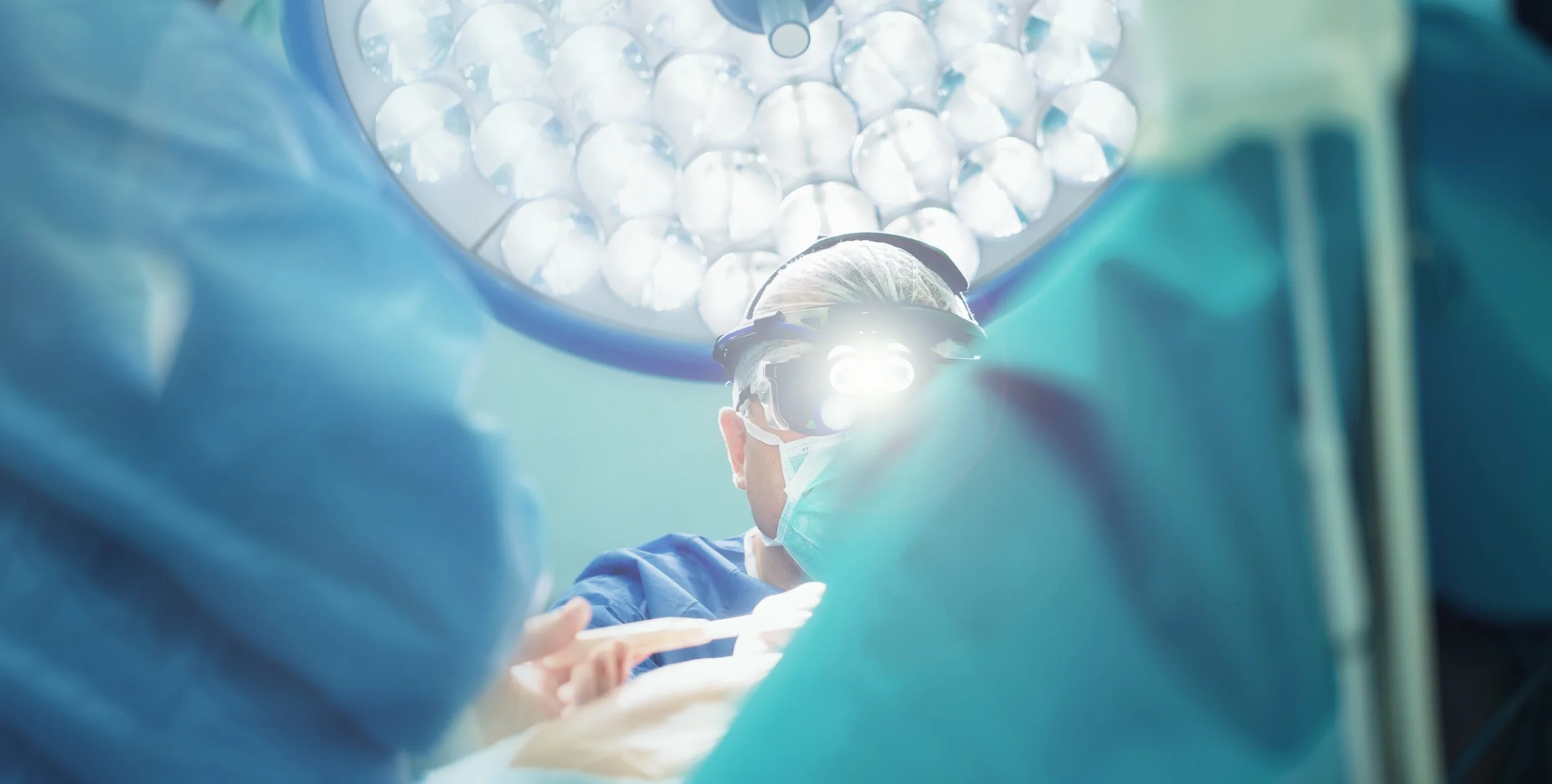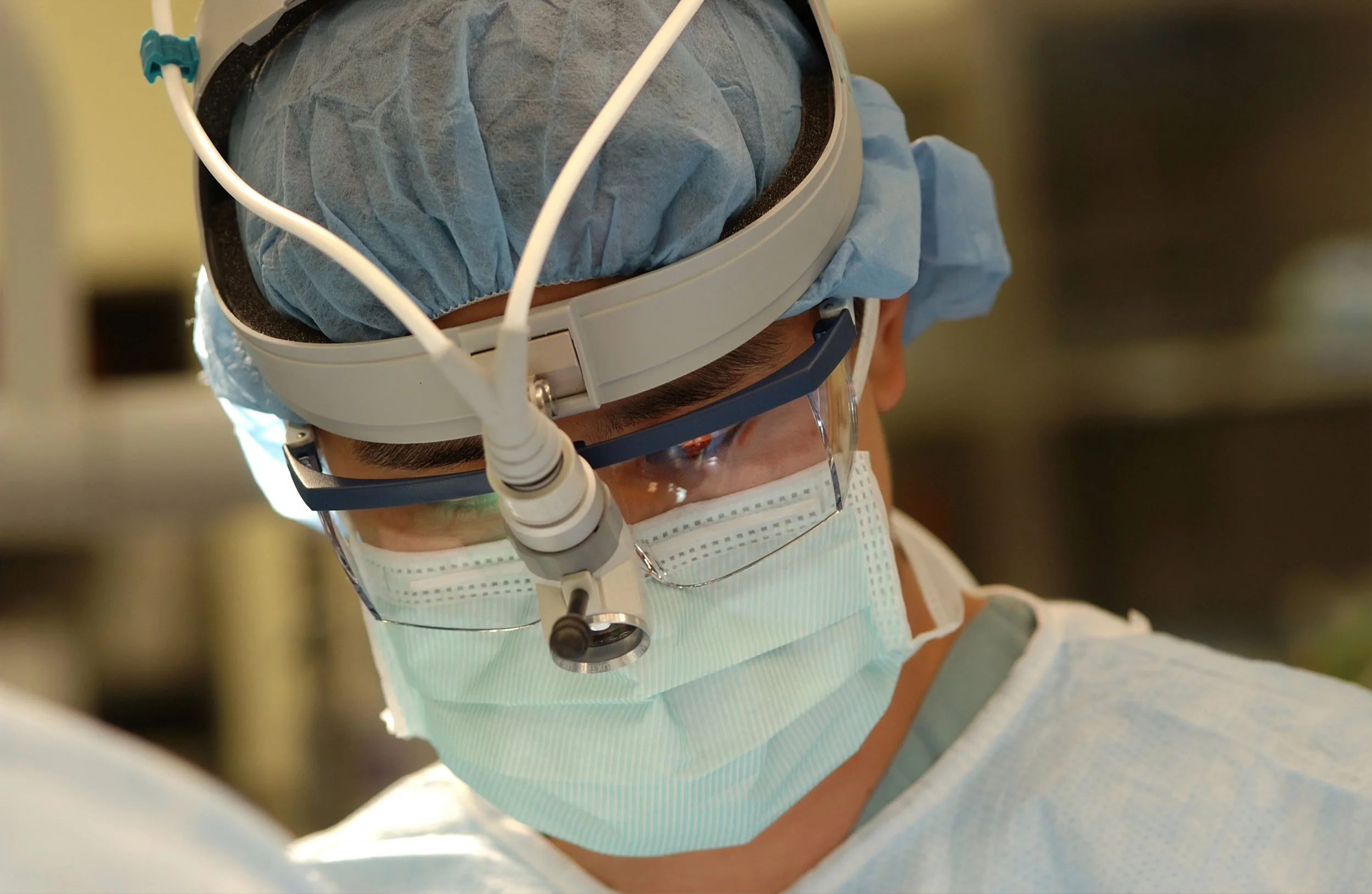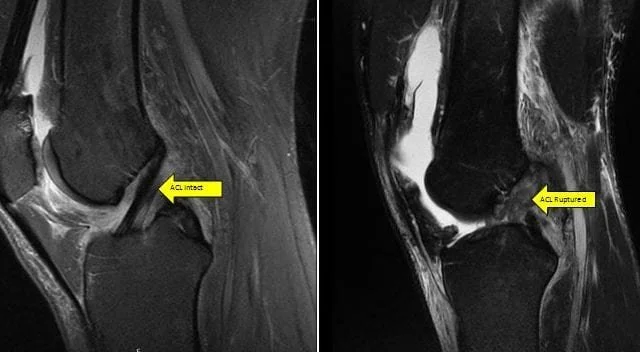ACL Series Part 2
What did my Surgery Post-Op look like?
Welcome to Part 2 of my ACL series. If you haven’t read Part 1 yet, you can go back and check it out here! This 2nd part will include surgery specifics such as graft choice, anesthesia, and nerve blocks as well as the trials and triumphs of being 1-week post-op.
Prior to surgery, my surgeon and I discussed my MRI results indicating that there was no other soft tissue damage that needed to be fixed in the operating room. We also discussed various graft options, but almost immediately agreed upon a bone-tendon-bone graft using my patellar tendon. Stay tuned for further discussion on graft options, but ultimately the reasons I chose a BTB graft were my desire to return to activities involving lateral movements and that I had excessive hyperextension in both knees. Since the hamstrings are involved in rotational, translational, and varus/valgus control of the knee, my surgeon did not want to compromise my hamstring strength by harvesting a graft there. [i]
DOS: Monday, September 30, 2019. There is not much to remember about the actual surgery itself as I was completely knocked out. I do remember waking up and feeling great; all hopped up on general anesthesia. My leg was numb for the car ride home so I told my husband I didn’t think he would need to go to the pharmacy to pick up my prescribed pain medicine. They had also given me a Nerve Block Catheter which is a super thin tube that is attached to a pouch containing a local anesthetic. The catheter is designed to automatically “slow-drip” deliver the medicine through the tube to block the nerves’ ability to transmit pain to the brain. Once it kicked in, it helped tremendously with keeping my pain levels low enough to avoid my prescribed oral medication. However, there was a 30-minute timeframe in which the general anesthesia started to wear off and the local anesthesia had not quite kicked in, where I put the fear of God in my husband to get to the pharmacy ASAP.
The catheter stayed in for 3 days, all of which my entire right thigh was completely numb. Within this timeframe, there were plenty of exercises I could do to keep myself busy. I was focused on heel propping for knee extension range of motion, gentle heel slides for knee flexion range of motion, ankle pumps, heel raises, proximal hip strengthening in both non weight bearing positions and weight bearing on my uninvolved leg, and gait training WBAT (weight-bearing as tolerated) with 2 and eventually 1 crutch(es).
““One of, if not the, most important thing(s) to do in the first week post ACL surgery is to make sure that you are using a heel prop to allow your knee to sit in full extension. The biggest mistake you can make is placing a pillow or bolster under the knee for long periods of time; though dang does it feel good to chill in slight knee flexion at this stage.””
One of, if not the, most important thing(s) to do in the first week post ACL surgery is to make sure that you are using a heel prop to allow your knee to sit in full extension. The biggest mistake you can make is placing a pillow or bolster under the knee for long periods of time; though dang does it feel good to chill in slight knee flexion at this stage. My expectations for myself and for my patients is to have full passive extension range of motion by 1-week post-op. Without full knee extension, the quads cannot fully contract which means we will never be able to fully rebuild quad strength. The more time that passes before reaching full extension, the harder it is to restore. When it comes to initiating flexion range of motion, I know I mentioned how nice it feels to hang out with a slight bend at the knee, but I will admit that the first time I tried bending any further than a resting position it felt like my kneecap was going to shoot straight out of the front of my thigh. Not to panic though, it does get easier.
In the hospital I was instructed on how to take the catheter out. I was nervous based on the excessively large packet of info they gave me but it turns out it wasn’t too hard or scary. About 2 hours after taking the catheter out I had an increase in pain, but honestly it was still manageable, especially since I was finally able to contract my quad and move around more.
My first PT appointment was 4 days after my surgery. This consisted of flexion and extension measurements, quad sets with biofeedback, hip strengthening and ice with elevation. I went home and spent the next few days continuing to work on my ROM and strengthening exercises, with more focus on gait training and restoring my quad activation. By Monday (one-week post-op), I was back to work as a Physical Therapist Assistant and seeing patients with a modified schedule to allow for breaks throughout the day. At this point, I was walking with no crutches, but my brace still locked into full knee extension. With my surgery being on the right leg, I also could not drive myself to work so my husband and dad alternated dropping me off and picking me up. I thoroughly enjoyed the chauffeur service so props to them for allowing me to indulge in this luxury for a few weeks.
So, Which Graft for ACL Surgery is Best?
ALLOGRAFT VS AUTOGRAFT
Allograft tissue is tissue taken from a cadaver, whereas autograft tissue is harvested from the patient’s own body. There is a time and place for either graft choice and many factors that play a part in deciding which graft is appropriate for the patient. Research has shown that allografts have higher rates of graft failure and slower integration into host tissue which can lead to more frequent cases of re-injury. However, for a patient who is not looking to return to higher level sports or activities that challenge the integrity of the ACL, an allograft may be a great option since there is usually less postoperative pain and no graft site complications. Allografts can also be useful for patients who have had a previous ACL reconstruction on the same knee and have already used their autograft of choice. [ii] When asked about the graft Dr. John Manning, MD stated, “The all-soft tissue quadriceps tendon autograft has become a mainstay ACL graft for me. It is so reliable to obtain a nice, thick graft in a patient of any size, and outcomes data is showing that it is performing right along with the patella tendon as far as recurrent tear rates. I have been very happy with the early recovery and less postop pain that patients have been experiencing with this graft.”
““When looking at a prospective ACL repair the selection of the graft, the prehab, and the tunnel to which the graft will live are very important.””
““I am doing majorly of ACL reconstructions using all soft tissue Quadriceps autograft. It is a fantastic graft with good supportive research and biomechanic data.” ”
PATELLAR TENDON VS HAMSTRING VS QUAD TENDON
PATELLAR TENDON GRAFT ACL Repair
PROS:
When the patellar tendon is harvested, the surgeon will take a piece of bone on both ends of the tendon graft and is then able to attach bone to bone. Bone healing is not only a much quicker process than soft tissue healing, but it more closely mimics the original ACL anatomy.
There are studies that show that the patellar tendon is less likely to rupture when compared to a hamstring graft, especially in cutting sport populations. [iii]
CONS:
Patellar tendon grafts require a larger (when compared to other graft types) incision at anterior knee which can lead to complications such as delayed quad strength, patellar tendonitis, and difficulty with kneeling.
HAMSTRING Tendon Graft ACL Repair
PROS:
Taking a graft from the hamstring does not require as large of an incision as from the patellar tendon. This means that the graft site will likely be less painful and due to its location will not as greatly affect functional movements that place stress at anterior knee such as kneeling and descending stairs.
Due to graft location and overall decreased pain levels, it is usually easier to restore range of motion and quad strength.
CONS:
In elite cutting sport populations, there is an increased likelihood of graft rupture with hamstring graft when compared to patellar tendon graft. [iii]
Hamstring tendons are also more likely to stretch over time and create increased laxity of the graft, especially in patients who have some level of joint laxity before surgery. [iv]
Because a piece of the hamstring was taken, it can be difficult to restore full hamstring strength. This can lead to instability of the knee as well as secondary injuries associated with weak hamstrings. [i]
“My go to graft of choice currently is a quad tendon autograft. In my opinion, it combines the best characteristics of both patellar tendon and hamstring grafts. It is a very stout graft and you can obtain a nice thick graft even in relatively small, petite patients. Additionally, recent studies have shown a very low failure rate in a young athletic patient population with a failure rate of less than 3%.”
QUAD TENDON GRAFT ACL REPAIR
PROS:
Using a quad tendon the healing process is a blend of the patellar tendon and the hamstring tendon grafts, where the surgeon will take a bone plug on one side, but the other side remains as soft tissue. This is considered positive because at least one side of the graft will have bone to bone healing, as will the patellar tendon graft.
The incision for the quad tendon is usually slightly above the kneecap so kneeling and anterior knee pain are not as big of a factor as compared to the patellar tendon graft. [v]
CONS:
We can just as easily consider the quad tendon to be a con because of the soft tissue end of the graft. This creates a limitation with healing just like the hamstring tendon, but unlike the patellar tendon.
Using the quad tendon is not as widely used, and it has just recently become a more popular technique so there is not as much data to support its long-term outcomes.
Each of these graft types are viable options for ACL reconstruction. The most important takeaway is making sure to discuss with your surgeon which graft is best for you. Weigh the pros and cons and really consider your personal goals and lifestyle.
GOALS FOR FIRST WEEK POST OP
Reduce Swelling
Manage Pain
Restore Knee Extension Range of Motion
Begin Restoring Knee Flexion Range of Motion
Quad Activation
Proximal Hip Strengthening
Stay tuned for ACL Journey Part 3
Manny writes about the specifics of her rehabilitation experience and other pearls in the early PT phase.
More Blogs & Webinars
AUTHOR:
Manny Tharrington, PTA, CSCS, CFSC
CONTRIBUTORS:
Dr. Christopher Wahl, MD
Frm UW & Chargers Team Physician, Sports Medicine Physician & Orthopedic Surgeon
Dr. Dayne Mickelson, MD
Former College Basketball Starter, Proliance Orthopedics and Sports Medicine
Dr. Ron Gregush, MD
ProOrtho Kirkland
Dr. John Manning, MD
Evergreen Health Orthopedics & Sports Medicine
Ben Wobker, PT, MSPT, CSCS, CFSC, SFMA
Founder & Director LWPT
REFERENCES
Filbay SR, Roos EM, Frobell RB, et al. Br J Sports Med 2017;51:1622–1629
Tanaka R et al. Efficacy of strengthening or aerobic exercise on pain relief in people with
Li, Y et al. The effects of resistance exercise in patients with knee osteoarthritis: a systematic review and meta-analysis. Clinical Rehabilitation. 2016 Oct;30(10):947-959
Zacharias A et al. Efficacy of rehabilitation programs for improving muscle strength in people with hip or knee osteoarthritis: a systematic review with meta-analysis. Osteoarthritis Cartilage. 2014 Nov;22(11):1752-73
Fransen, M. Exercise for osteoarthritis of the hip or knee. Cochrane Database Syst Rev. 2003;(3).
Goh, SL et al. Efficacy and potential determinants of exercise therapy in knee and hip osteoarthritis: A systematic review and meta-analysis. Annals Physical Rehabilitation Medicine. 2019 Sep;62(5):356-365
Bartels, EM et al. Aquatic exercise for the treatment of knee and hip osteoarthritis. Cochrane Database Syst Rev. 2016 Mar 23;3
Allyn M et al. The pain-relieving qualities of exercise in knee osteoarthritis. Open Access Rheumatology: Research and Reviews 2013:5 81–9
Horga, LM et al. Can marathon running improve knee damage of middle-aged adults? A prospective cohort study. BMJ Open Sport Exerc Med. 2019; 5(1)
Webster, K. and Feller, J. (2019). Expectations for Return to Preinjury Sport Before and After Anterior Cruciate Ligament Reconstruction. The American Journal of Sports Medicine, 47(3), pp.578-583.
Myer, G., Paterno, M., Ford, K., Quatman, C. and Hewett, T. (2006). Rehabilitation After Anterior Cruciate Ligament Reconstruction: Criteria-Based Progression Through the Return-to-Sport Phase. Journal of Orthopaedic & Sports Physical Therapy, 36(6), pp.385-402.
Sadeqi, M., Klouche, S., Bohu, Y., Herman, S., Lefevre, N. and Gerometta, A. (2018). Progression of the Psychological ACL-RSI Score and Return to Sport After Anterior Cruciate Ligament Reconstruction: A Prospective 2-Year Follow-up Study From the French Prospective Anterior Cruciate Ligament Reconstruction Cohort Study (FAST). Orthopaedic Journal of Sports Medicine, 6(12), p.232596711881281.
Cordasco, F., Black, S., Price, M., Wixted, C., Asaro, L., Heller, M., Nguyen, J. and Green, D. (2018). Return to Sport and Re-Operation Rates in Athletes Under the Age of 20 Following Primary Anterior Cruciate Ligament Reconstruction: Risk Profile Comparing Three Patient Groups Predicated Upon Skeletal Age. Orthopaedic Journal of Sports Medicine, 6(7_suppl4), pp.2325967118S0005.
Graziano, J., Chiaia, T., de Mille, P., Nawabi, D., Green, D. and Cordasco, F. (2017). Return to Sport for Skeletally Immature Athletes After ACL Reconstruction: Preventing a Second Injury Using a Quality of Movement Assessment and Quantitative Measures to Address Modifiable Risk Factors. Orthopaedic Journal of Sports Medicine, 5(4), p.232596711770059.
Losciale, J., Zdeb, R., Ledbetter, L., Reiman, M. and Sell, T. (2019). The Association Between Passing Return-to-Sport Criteria and Second Anterior Cruciate Ligament Injury Risk: A Systematic Review With Meta-analysis. Journal of Orthopaedic & Sports Physical Therapy, 49(2), pp.43-54.
Meierbachtol, A., Yungtum, W., Paur, E., Bottoms, J. and Chmielewski, T. (2018). Psychological and Functional Readiness for Sport Following Advanced Group Training in Patients With Anterior Cruciate Ligament Reconstruction. Journal of Orthopaedic & Sports Physical Therapy, 48(11), pp.864-872.
LaBella, C., Hennrikus, W. and Hewett, T. (2014). Anterior Cruciate Ligament Injuries: Diagnosis, Treatment, and Prevention. PEDIATRICS, 133(5), pp.e1437-e1450.
Risberg, M., Grindem, H. and Øiestad, B. (2016). We Need to Implement Current Evidence in Early Rehabilitation Programs to Improve Long-Term Outcome After Anterior Cruciate Ligament Injury. Journal of Orthopaedic & Sports Physical Therapy, 46(9), pp.710-713.
Arundale, A., Capin, J., Zarzycki, R., Smith, A. and Snyder-Mackler, L. (2018). TWO YEAR ACL REINJURY RATE OF 2.5%: OUTCOMES REPORT OF THE MEN IN A SECONDARY ACL INJURY PREVENTION PROGRAM (ACL-SPORTS). International Journal of Sports Physical Therapy, 13(3), pp.422-431.
Failla, M., Arundale, A., Logerstedt, D., Snyder-Mackler, L.(2015). Controversies in Knee Rehabilitation: Anterior Cruciate Ligament Injury. Clin Sports Med. 34(2),pp. 301-312.
Laible, C. and Orrin, S. (2014). Risk factors and prevention strategies of non-contact anterior cruciate ligament injuries. - PubMed - NCBI. [online] Ncbi.nlm.nih.gov. Available at: https://www.ncbi.nlm.nih.gov/pubmed/25150329 [Accessed 1 Apr. 2019].
[i] Toor, A. S., Limpisvasti, O., Ihn, H. E., McGarry, M. H., Banffy, M., & Lee, T. Q. (2019). The significant effect of the medial hamstrings on dynamic knee stability. Knee surgery, sports traumatology, arthroscopy : official journal of the ESSKA, 27(8), 2608–2616
[ii] Pujji O, Keswani N, Collier N, Black M, Doos L. Evaluating the Functional Results and Complications of Autograft vs Allograft Use for Reconstruction of the Anterior Cruciate Ligament: A Systematic Review. Orthop Rev (Pavia). 2017;9(1):6833. Published 2017 Mar 29. doi:10.4081/or.2017.6833
[iii] Samuelsen BT, Webster KE, Johnson NR, Hewett TE, Krych AJ. Hamstring Autograft versus Patellar Tendon Autograft for ACL Reconstruction: Is There a Difference in Graft Failure Rate? A Meta-analysis of 47,613 Patients. Clin Orthop Relat Res. 2017;475(10):2459-2468. doi:10.1007/s11999-017-5278-9\
[iv] Kim, Sung-Jae et al. “Bone-patellar tendon-bone autograft could be recommended as a superior graft to hamstring autograft for ACL reconstruction in patients with generalized joint laxity: 2- and 5-year follow-up study.” Knee surgery, sports traumatology, arthroscopy : official journal of the ESSKA vol. 26,9 (2018): 2568-2579. doi:10.1007/s00167-018-4881-y
[v] Mouarbes, Dany et al. “Anterior Cruciate Ligament Reconstruction: A Systematic Review and Meta-analysis of Outcomes for Quadriceps Tendon Autograft Versus Bone-Patellar Tendon-Bone and Hamstring-Tendon Autografts.” The American journal of sports medicine vol. 47,14 (2019): 3531-3540. doi:10.1177/0363546518825340






